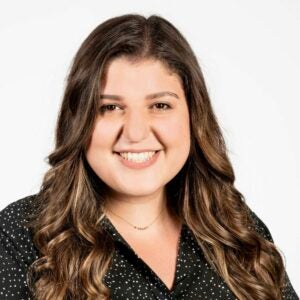In today’s competitive job market, ensuring the right employee fit goes beyond qualifications and experience; it’s about health and safety, too. Pre-employment medical screening is not just a formality; it’s a strategic approach that benefits employers and new hires alike.
In the healthcare sector, conducting pre-employment medical screenings in a timely manner is crucial because many hospital jobs are physically demanding, leading to a higher incidence of injury among healthcare workers. In fact, healthcare employers incur approximately six work-related injuries per 100 full-time workers, surpassing the rates found in traditionally hazardous industries like manufacturing and construction1.
Conducting medical screenings before hiring allows healthcare organizations to identify candidates who may be at greater risk for occupational illnesses or injuries that could lead to future sick leave. Ultimately, these screenings ensure healthcare staff are physically and mentally prepared for the demands of their job and can help healthcare employers make informed decisions about their future workforce.
In this blog we will explore:
- What pre-employment medical screenings entail
- The importance of pre-employment medical screenings in healthcare for the employee and the employer
Understanding Pre-Employment Medical Screening
Pre-employment medical screening involves a series of health checks that happen during the recruiting stage after a conditional offer has been made to a candidate. The medical screening is designed to assess whether a potential hire is medically fit to handle the functional demands of their role. In healthcare, pre-employment screenings often include:
- Physical exams: Assessing general candidate fitness for roles that may require physical stamina, strength, and flexibility;
- Drug and alcohol tests: Ensuring that employee’s judgment and performance of duties is not negatively influenced by substances that could place patients at risk
- Vaccination review: Ensuring healthcare workers meet the vaccination and immunity guidelines set forth by applicable regulatory bodies; and
- Mental health evaluations: Relevant for high-stress roles or patient-facing positions to ensure emotional resilience.
The primary goal of these pre-employment screening practices is to verify that the candidate is suited to perform their role safely, thereby minimizing preventable health & safety risks to themselves, their co-workers, and their patients.
Benefits of Pre-Employment Medical Screening
In the healthcare sector, pre-employment screening is valuable for its role in promoting health, safety, and most importantly, regulatory compliance. This process provides benefits that are critical to both employers and employees.
Benefits of Pre-Employment Medical Screening for the Employer
One of the primary advantages of pre-employment screening for employers is effective risk management. When a workplace injury occurs, hospitals must consider related costs, beyond direct expenses related to treatment. These include workers’ compensation payments for lost time, expenses for temporary staffing and backfilling, overtime to cover missed shifts, and turnover costs if an injured employee leaves the job permanently2. Pre-employment health screenings also help identify potential medical conditions or limitations that could put the employee, co-workers, or patients at risk if undetected.
Ensuring that candidates and new hires are physically and mentally prepared for their roles is essential for maintaining productivity and reducing turnover. Healthcare occupations report some of the highest rates of musculoskeletal injuries, many of which stem from inadequate physical preparation3. Pre-employment medical screening plays a crucial role in assessing the candidate’s physical fitness and job compatibility, helping healthcare organizations avoid costly workplace injuries and illness disruptions.
Regulatory compliance is a critical responsibility for healthcare employers. Pre-employment medical screenings are a proactive step that help hospitals comply with health & safety standards for injury prevention and infection control, to name a few. For instance – Depending on the state of employment, U.S. Centers for Disease Control (CDC) mandates certain vaccinations for healthcare workers. Conducting screenings during the hiring process helps healthcare organizations fulfill necessary physical, medical, vaccination and compliance standards that are set by applicable regulators4.
Benefits of Pre-Employment Medical Screening for the Employee
Pre-employment screening provides employers with reassurance and confidence regarding employees’ medical fitness. This process ensures a good fit between the individual and their daily demands, and signals to candidates that the healthcare organization prioritizes their well-being. According to The Science of Care, 60% of employees who feel that their employer supports their health & wellbeing at work are more likely to remain with their employers for at least three years. By fostering a culture of health and safety, organizations can enhance employee retention, satisfaction, and on-the-job performance.
Final Thoughts
Pre-employment medical screenings are an essential component of the healthcare hiring process, benefiting both employers and employees by ensuring that candidates are fit for the demanding and often physically intensive roles they are being hired for. These screenings not only promote health and safety within the workplace but also help healthcare organizations mitigate risks, maintain regulatory compliance, and reduce turnover. For employees, knowing that their health and well-being are prioritized by their employer fosters a sense of security, contributing to greater job satisfaction and long-term retention. By investing in these screenings, healthcare organizations are taking a proactive step toward building a safer, healthier, and more efficient workforce.
To learn how software can help streamline the pre-employment screening process, check out our blog How to Run an Efficient Pre-Employment Screening Process in Healthcare
Sources:
2 https://www.osha.gov/hospitals/understanding-problem











